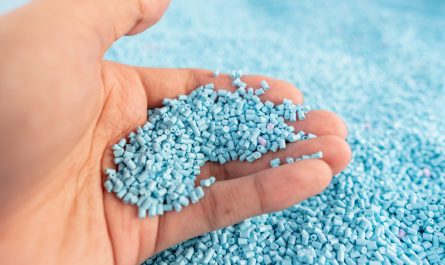Microplastics are small pieces of plastic debris that are less than 5 mm in size and are increasingly polluting the environment. They enter the environment through various sources such as industrial waste, sewage systems, synthetic textiles, and recreational activities among others. The increasing plastic pollution across oceans and freshwater has created the need for effective microplastic recycling solutions. Microplastic recycling helps recover these tiny plastic particles before they enter water bodies and cause extensive ecological damage. Advancements in separation technologies such as spectroscopy-based techniques and flotation methods have improved microplastic identification and recovery rates, driving their adoption across recycling plants.
The Global Microplastic Recycling Market is estimated to be valued at US$ 276.6 MN in 2024 and is expected to exhibit a CAGR of 7.0% over the forecast period 2024 to 2031.
Key Takeaways
Key players operating in The Global Microplastic Recycling Market are Polygonesystems, PlanetCare, ECOFARIO, Ocean Diagnostics, Oceanworks, Matter, Carbios, Purecycle technologies, Ioniqa, and Calyxia. These players are focusing on developing advanced sorting and recovery solutions to separate microplastics from complex waste streams efficiently.
The growing awareness about negative impacts of plastic pollution and stringent regulations banning microplastics in personal care products and textiles are creating opportunities for adoption of microplastic recycling solutions across industries. Countries in Europe and North America are investing in municipal recycling infrastructure up-gradation to improve microplastic capture.
Advancements in spectroscopy techniques such as Fourier-transform infrared spectroscopy (FTIR) and Raman spectroscopy have improved accuracy of microplastic identification. Flotation-based solutions using differences in densities are demonstrating higher recovery rates. Such technological enhancements are supporting commercialization of microplastic recycling.
Market Drivers
Regulatory push for circular plastics economy: Strong policies restricting virgin plastic use and mandating post-consumer recycled content are driving end-use industries and brand owners to invest in microplastic recycling solutions. Government funding and subsidies for waste management up-gradation are also fueling market growth.
Growing consumer awareness: Rising environment consciousness among public regarding plastic pollution damaging oceans is prompting leading brands to integrate sustainability practices including adopting recycled plastics use. This is creating steady demand for recycled microplastics.
Municipal waste recycling infrastructure expansion: governments across regions are implementing plans for modernizing recycling facilities with technologies for enhanced purification and efficient separation of plastics from mixed streams. This fuels commercial and large-scale deployment of microplastic recycling technologies.
Current Challenges in Global Microplastic Recycling Market
The global microplastic recycling market faces various challenges. Microplastics are extremely difficult to collect, separate, and recycle effectively due to their tiny size. New and improved technologies are required for efficient identification and sorting of microplastics mixed with other waste materials. Significant investments are needed to develop large-scale recycling plants and facilities with advanced sorting mechanisms. Lack of public awareness about microplastic pollution is also a major challenge. Most people are unaware of the origins and impacts of microplastics. Public participation and behavior change campaigns are required to curb the rising microplastic waste levels. Additionally, establishing global standards for measuring and monitoring microplastics remains a challenge.
SWOT Analysis
Strength: Growing concerns about plastic pollution and its impact on the environment is driving demand for microplastic recycling solutions.
Weakness: Existing recycling technologies have low collection and sorting rates for microplastics. Advancements are needed for commercially viable recycling processes.
Opportunity: Regulations banning microplastics in personal care products and other industries are encouraging companies to adopt greener alternatives.
Threats: Collection of microplastics from oceans and waterways is extremely difficult. Alternative waste management options need to be explored.
Geographical Regions
North America accounts for the largest share of the global microplastic recycling market both in terms of value and volume. The region witnesses highest microplastic waste generation from industries like packaging, textiles, healthcare, and others. Countries like the U.S. and Canada have implemented several regulations regarding plastic waste recycling.
Asia Pacific exhibits fastest growth in the microplastic recycling market led by countries such as China, India, and Japan. Rapid industrialization and urbanization have increased plastic usage in the region. At the same time, inadequate waste management infrastructure possesses a threat. Hence, governments are promoting initiatives for sustainable plastic management.




